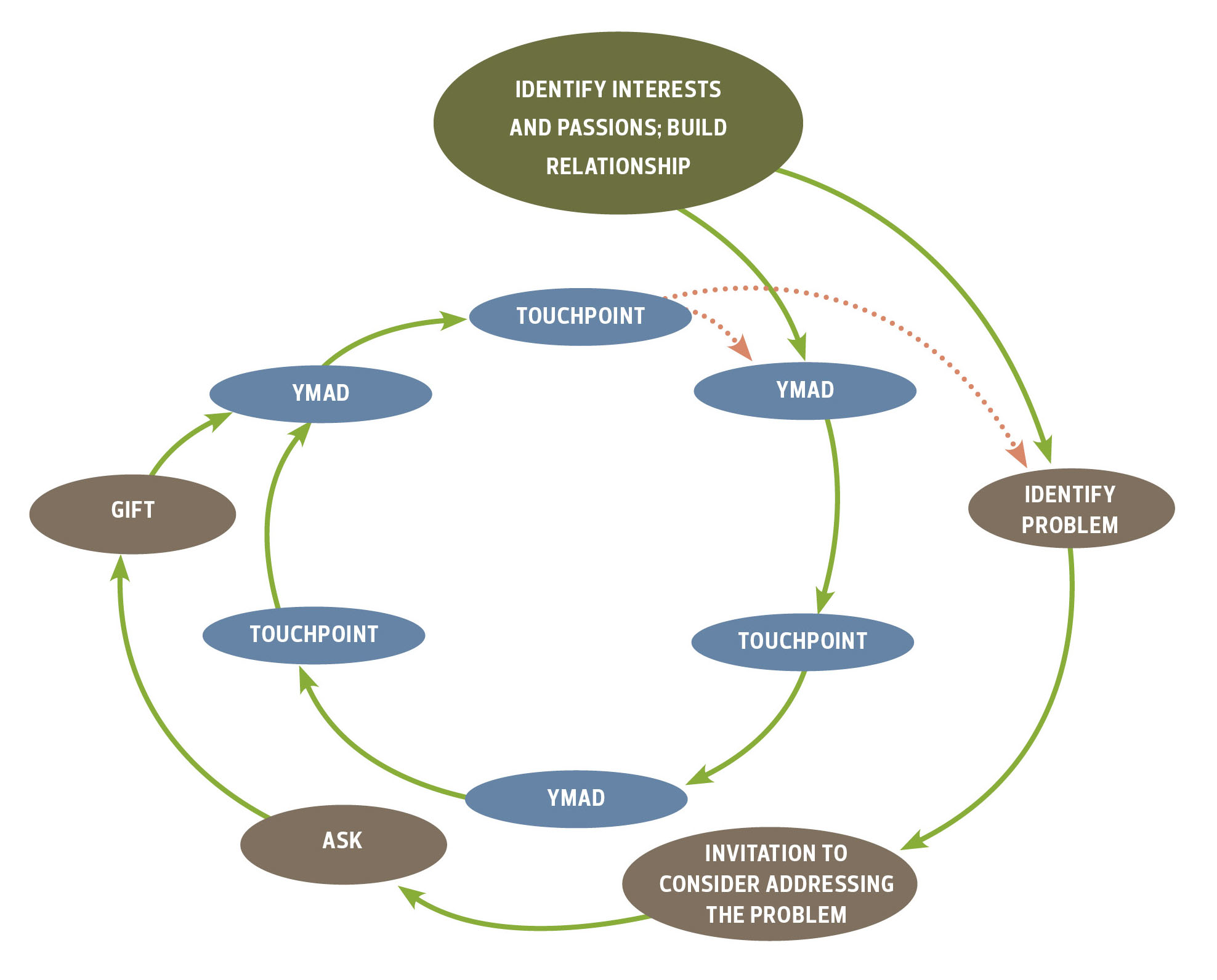In my last post I talked about why it’s important to have a solid strategic plan for every donor. Today, I’m going to help you understand the essentials of a putting that plan together. Here are the steps I suggest you should take when writing a strategic plan:
Understand the big picture — before coming up with a plan for each of your donors, you have to know what your goals are. For every donor you need to go through an arduous exercise of evaluating your actions for the year before and what the results were. Sometimes I see development folks just put a goal up because that’s “what the boss wants.” Or “that’s what the overall percentage goal is so I’m just going to raise that across the board with my donors.” Yikes! That doesn’t make any sense. Every goal attached to an individual donor should have a “story.” That story includes, what they gave last year, their current financial situation, how they feel about your organization, what your relationship is like with them, etc. It’s not just assigning a dollar figure based on a previous dollar figure.
There has to be balance to your plan — if you review your yearly strategic plan for your donor, you have to understand there is a delicate balance of the TYPE and the TIMING of your communications. Here is a chart we have shown before, but this gives you a good overall idea on how Richard and I think about the flow of communication throughout the year.

As you can see, over the course of the year there is an ongoing cycle of communication that includes asking, thanking and sending YMAD (YOU MADE A DIFFERENCE) touches, along with personal notes.
Cash-flowing your goals — this is simply making a highly educated guess about when to expect the revenue from each donor. For example, your goal for one of your donors might be $50,000 – $25,000 in March and $25,000 in December. This is important to do as it 1) helps you design your plan, 2) allows you and senior management to consider when to expect revenue, and 3) holds you accountable with a monthly revenue goal. Believe me, you want this. It helps keep you focused.
Start building your plan — now that you have a revenue goal for each donor and you have it cash-flowed by month, you’re ready to create the strategic plan. To put it simply, the strategic plan is the answer for how you are going to make your goals. Remember, following the communication cycle is key here. And knowing what is happening with your organization during the course of the year is critical. What are the events that your organization is sponsoring? What volunteer opportunities are there? What kind of mailings is the direct-response program doing? These are all important things to potentially use in your plan.
Know your donor — Richard and I have talked a ton on this. But, knowing your donor, their passions, the type of person they are, how they like to be communicated with drives your strategy. So, if you know your donor is interested in helping children in Haiti, you’re not going to send them an article on elder care in Honduras. See what I mean? The donor wants to be “known.” Keep this in mind as you plan.
A good mix — this sort of ties in with balance of communications, but is really about a combination of “asks,” personal touches, direct “you made a difference” touches and more mass organizational pieces. What I really mean is, while you have an individual plan for everyone, not everything you use to communicate is personal to that specific donor. For instance, you might have a high-end direct-mail piece you send to everyone, or a newsletter, or even an invite to your annual gala. But, you’ll also mix in personal touches that are specific to the donor, like birthday and other important dates, or articles on areas they are interested in. Note: There should be at least one touch per month per donor as part of your plan.
The actual plan — the actual physical plan can take many forms. You may have sophisticated software that allows you to build a plan that is connected to your calendar. But, you don’t need it. Quite simply, you can create an Excel spreadsheet with all of your donors running down the left side of the worksheet and the months spread out on the right. Here’s an example:

You see, this is quite simple to do. Now, if you really want to impress your colleagues, once you complete your plan for each donor in Excel, take the document to a copy store and have them blow it up into poster size and hang it up on your wall. Not only does it look impressive, but also it’s a constant reminder on what you have to accomplish that day. When it’s looking at you everyday you can’t get lost. (We can send you a sample Marketing Impact Chart in Excel – click here to request it.)
Creating a strategic plan for each of your donors is essential to keeping you focused, disciplined and accountable… it will also help you reach your goals! We would love to hear from you on how you do your planning.
Jeff




0 Comments